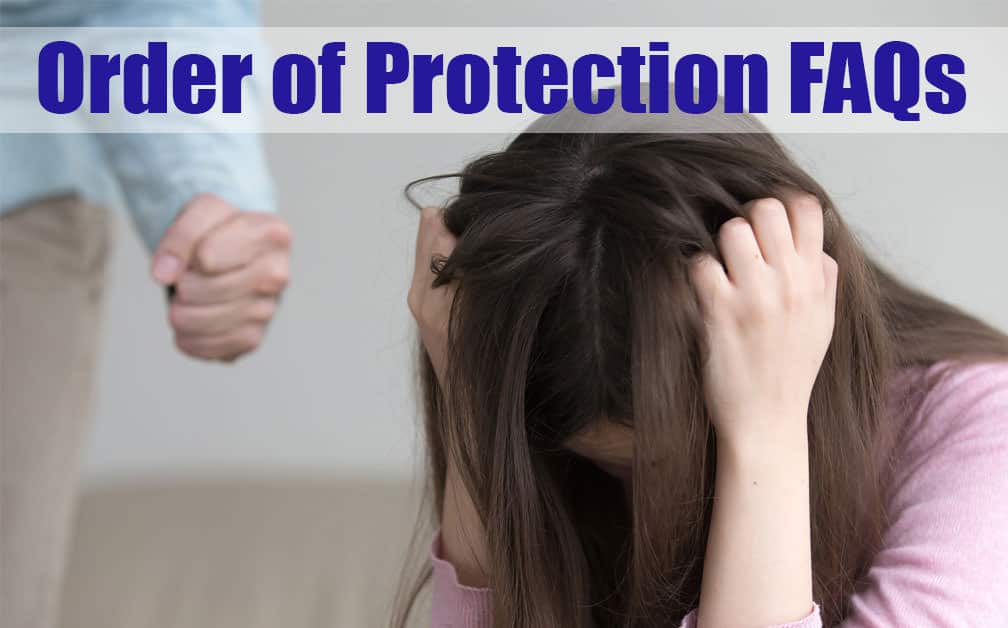As an experienced Long Island Divorce and Family Law Attorney, we see countless clients come to us seeking advice on obtaining an Order of Protection (OP).
The Basis for Granting an Order of Protection on Long Island
Orders of Protection are court-ordered documents that require the respondent (the abuser) to stay away from or refrain from contact with the petitioner (the victim of abuse). Family Courts in Suffolk County, Nassau County or any other county in New York are the most common forum in which to seek an Order of Protection. In order for the Family Court to grant an Order of Protection, the respondent must have committed a family offense.
A sample of family offenses include:
- Disorderly conduct;
- Harassment;
- Stalking;
- Menacing;
- Assault;
- Criminal Obstruction of Breathing.
This is not an exhaustive list – there are other offenses that will cause the court to grant you an Order of Protection as well.
Who Can Seek an Order of Protection?
According to New York State law, the following may seek an Order of Protection:
#1. A spouse, former spouse, parent, child or member of the same family or household as the respondent
#2. A duly authorized agency, association society or institution
#3. A peace officer, acting pursuant to his or her duties, or a police officer
#4. A person on the court’s own motion
After years of experience, the most common petitioner is a spouse or former spouse seeking an OP. It is, unfortunately, not unusual to see spouses who are in the middle of a divorce also engage in a Family Offense action.
How Do I Obtain an Order of Protection on Long Island?
In order for a court in Nassau County or Suffolk County to grant an Order of Protection, the petitioner must file what is called a Family Offense Petition. The Petition asks for the petitioner to provide such information as your relationship to the respondent, which Family Offense was violated, whether children live with you, whether the respondent owns or is in possession of a firearm and whether the respondent has a criminal record. In most cases, the day a Family Offense Petition is filed, the petitioner will appear before the court.
What is a Temporary Order of Protection?
On that first appearance date, the Family Court will, if good reason is shown, issue a Temporary Order of Protection. The court may order the respondent to refrain from certain actions, like communicating with the petitioner, or stay away from the petitioner and/or the petitioner’s children. If the respondent owns or is in possession of a firearm, the court may direct the respondent to turn it over to the police until the proceeding is resolved.
However, because this order is temporary, it will typically only be in effect until the date the respondent is directed to be in court. As such, a Temporary Order of Protection may only be effective for a few weeks to a month.
Will there be a Hearing or Trial?
Yes and no. There will not be a trial relating solely to your Order of Protection, but there may be what is called a Fact-Finding hearing. When the respondent appears in court, he or she has the choice to admit or deny the allegations contained in the petition. If he or she admits the allegations, then an Order of Protection will be issued and there will be no hearing. However, if there is a denial of the allegations, the court will hold a Fact-Finding Hearing to determine whether the allegations are true. In the hearing, the petitioner must prove that the allegations are true by a fair preponderance of the evidence. The potential outcomes of such a hearing include dismissing the petition, suspending judgment for no more than 10 months, issuing an OP and direction restitution be paid.
What Will be Included in the Order of Protection?
If a final Order of Protection is granted, it may include reasonable conditions of behavior, refrain from certain behaviors, stay away from certain places, pay counsel fees, requirement to attend counseling, stay away from certain individuals and provide for medical expenses that resulted from the incidents leading up to the Order of Protection.
What if the Respondent Violates the Order of Protection?
If the respondent violates a valid Order of Protection, you should immediately call the police, who will enforce the order and document the violation. If the court finds that the respondent willfully violated/failed to obey an Order of Protection, the court could modify the existing Order of Protection to add conditions, issue a new Order of Protection, direct the respondent to pay counsel fees for the petitioner, and may commit the respondent to jail for a term of no more than six months.
Do You Need an Order of Protection on Long Island? Contact Us
If you are seeking an OP, call our Family Law firm today at 631-923-1910 to set up your free consultation. We have helped countless people through this tumultuous and emotional process, and would be happy to help you as well.
Download Your Free New York Divorce Guide
Our 41-page “Guide to New York Divorce: What You Need to Know Before Hiring a Divorce Lawyer in New York” written by an experienced family law lawyer, Long Island’s Robert E. Hornberger, Esq., provides you with real information on the divorce process and the laws it rests upon in the state of New York. This book will help give you a solid foundation upon which you can begin the process of making your family’s, life better.
